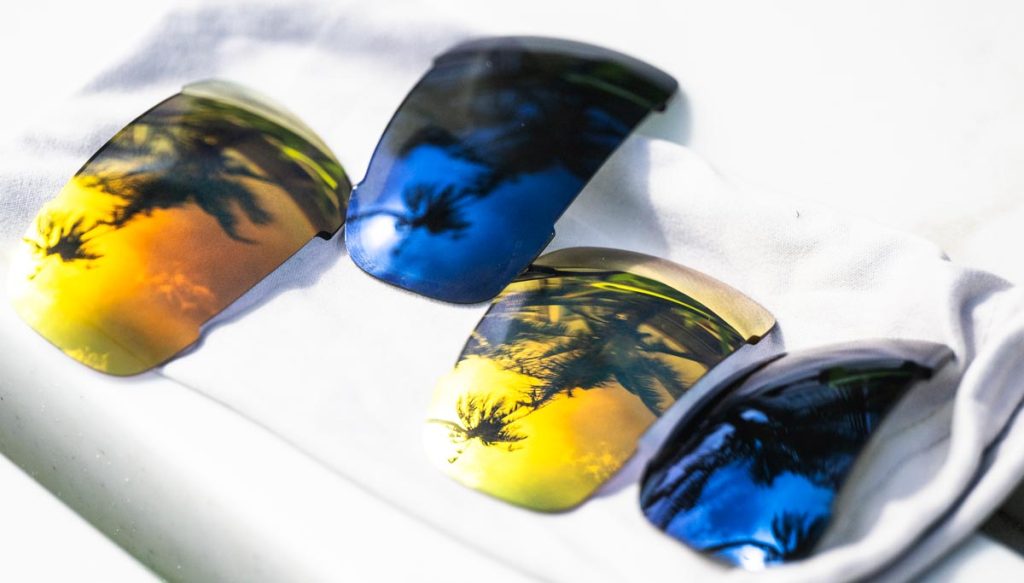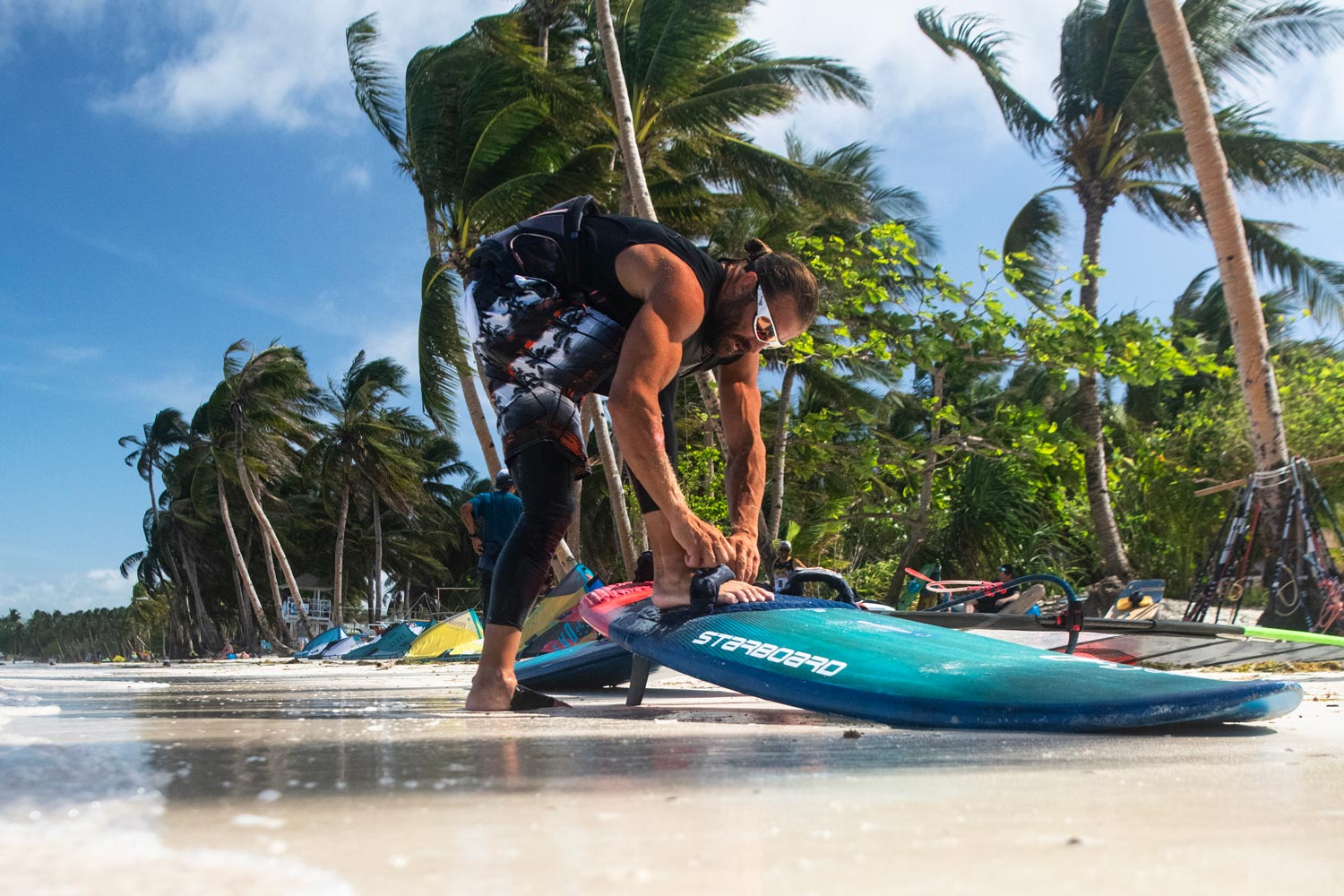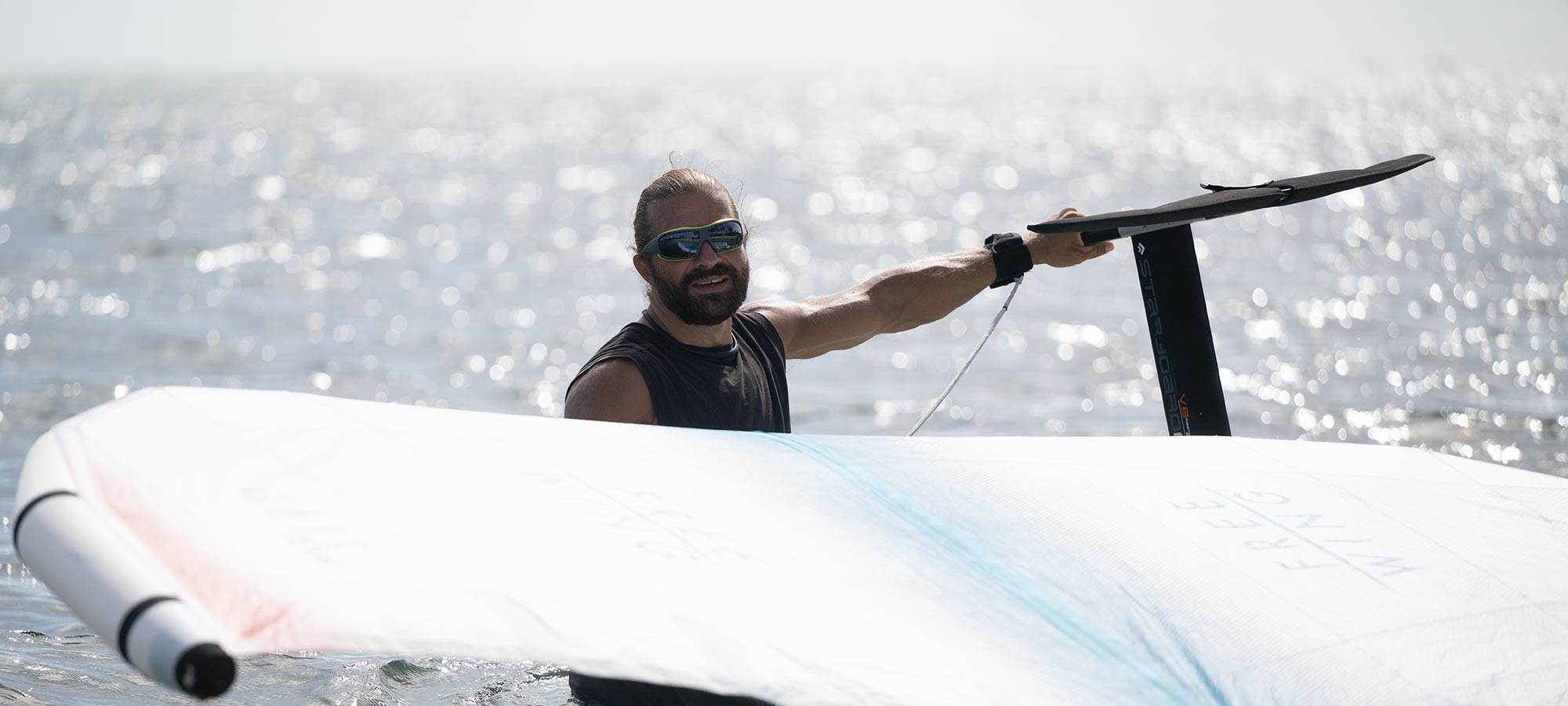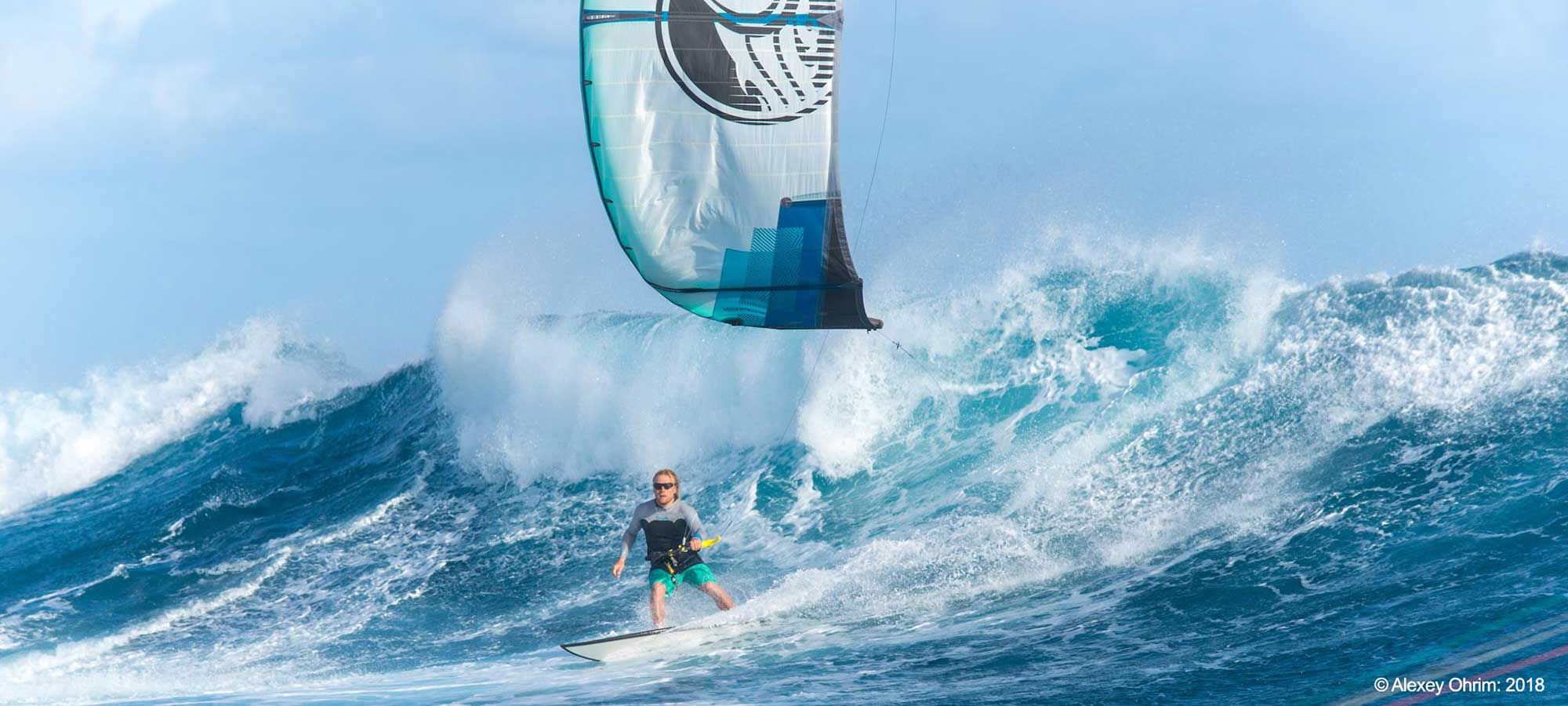Sunglasses aren’t just a style choice when you’re on the water – they’re essential equipment. Whether you’re paddling, sailing, surfing or fishing, the demands on your eyewear are far beyond what you’d face on land. From relentless glare, UV exposure, wind, spray, and high-velocity impacts, watersports push gear to the limit, and eyewear is no exception.
But choosing the right sunglasses isn’t as simple as picking a “watersports” label and calling it done. The best setup for an offshore sailor won’t be the same as for a whitewater paddler – and even within a single discipline, your needs can shift with changing light, weather, or intensity.
This short guide breaks down the key factors you should consider, from lens tint and material to frame design and retention systems, based on your activity and the conditions you’re likely to face. Whether you’re looking to build a one-and-done setup or assemble a modular kit with multiple lens options, the goal is simple: clarity, comfort, and confidence on the water.
And with interchangeable lens systems, you can tailor your setup to both your sport and the day’s conditions without needing a second pair.
The Four Pillars of Watersports Eyewear
All high-performance watersports eyewear should deliver on four core principles. These don’t change whether you’re kiting a reef break or paddling across a glassy lake. What does change is how you prioritise them.
Pillar | What it means | Why it matters |
|---|---|---|
Protection | UV shielding, glare reduction, and impact resistance | Shields your eyes from UV radiation and reflected glare; protection against spray and impacts |
Performance | Optical clarity, wide peripheral vision, contrast enhancement, functional lens coatings | Lets you read water surfaces, spot hazards, and stay visually sharp in any environment |
Retention | How securely the sunglasses stay on – even under stress or impact | A must for high-movement or wipeout-prone sports like surfing, kiteboarding, and foiling |
Comfort | Fit, weight, adjustability, ventilation | Reduces distractions, avoids pressure points, keeps you focused – especially on long sessions |
1. Protection: Shielding Your Eyes from More Than Just the Sun
All watersports expose your eyes to some hazards – not just UV rays, but also glare, spray, flying sand, and even the other gear you are using. Watersports sunglasses lenses should do more than just block light: they should filter, deflect, and defend.
• UV Protection is non-negotiable. Lenses should be certified with 100% UVA & UVB protection.
• Polarization reduces surface glare, critical for reading water texture, and spotting hazards well in advance
• Impact resistant material is crucial for high-speed sports like kiteboarding, windsurfing and foiling. Polycarbonate, polyurethane and nylon all offer excellent impact protection.
Alongside the lenses, the frame should be durable, flexible and provide a level of impact absorption and load spreading. Foiling kit in particular presents unique dangers. Don’t take our word for it, read customer Alex Taskov’s story about how his foil board nearly took out his right eye.
2. Performance: Seeing More, Reacting Faster
The best watersports sunglasses don’t just protect – they lift your experience. Enhanced clarity and contrast, reduced eye strain, water shedding coatings and automatic adjustments to lens tints prime you for better judgment calls and faster response times. Here it is all about the lenses…
• Lens Materials: Nylon , Polycarbonate and Polyurethane for clarity and crisp distortion-free optics.
• Mirror coatings that reflect excess light in high-sun environments like offshore sailing or open-water SUP.
• Hydrophobic coatings on both sides of the lenses to keep your vision free from water spotting.
• Photochromic lenses that automatically adjust to shifting light conditions – ideal for variable days on the water.
Performance is about seeing the wave sets earlier, or spotting the gust lines texture on the water, and reacting without hesitation because you can see everything in HD clarity.

3. Retention: Because the Ocean Doesn’t Give Second Chances
In many watersports, a moment of distraction can send your shades to the abyss. That’s why retention isn’t an afterthought – it’s a priority.
• Integrated leash systems are a must for any impact-prone sport like surfing, winging, or windsurfing.
• Floating frames work well for more relaxed disciplines like canoeing or SUP, where easy and immediate recovery is possible, but become less suitable as wind and waves take over.
• Secure wrap-fit: Wraparound geometry allows the frame to contour closely to the head, creating a natural hugging effect that enhances stability — even before a leash system comes into play. Wrap-fit sunglasses also reduce ‘UV leakage’ and maximise your peripheral vision.
If your sunglasses wouldn’t survive a wipeout with you, they’re not built for watersports.
4. Comfort: Because Endurance Starts with a Solid Fit
Long sessions on the water can turn small discomforts into big distractions. The right eyewear should feel like it belongs on your face – light, balanced, and unobtrusive.
• Weight and balance: Even distribution prevents pressure points and headaches, especially for long sessions.
• Ventilation: Reduces heat and moisture build-up behind the lenses, especially for slower-moving watersports.
• Soft overmolded rubber on the nose and bridge area: Distributing pressure evenly across the bridge of your nose, and serve as shock absorbers when you take a tumble
• Adjustable retention system: the ability to easily toggle tightness to ensure a secure and comfortable fit for your head size
Comfort doesn’t just feel good. It frees you to focus on what you’re there to do: boost, explore, race or paddle.
One Pillar May Matter Most — But You Need Them All
Every watersport puts different demands on our eyes and eyewear. Surfers need bombproof retention. Sailors need ultimate glare control. Kayakers need comfort over hours of paddling and protection from low overhanging foliage. But in truth, no single pillar stands alone. The best watersports eyewear strikes a balance across all four: Protection, Performance, Retention, and Comfort.
If you build your setup around those pillars – first by selecting the ideal frame and then adding the lenses that are best suited to your activity, local environment and weather conditions – you’ll not only protect your eyes, you’ll elevate your time on the water.
Adding additional lenses to your base setup will expand the range of conditions you can operate in and build versatility into your eyewear. To get you started with an ideal quiver of lenses to suit all conditions and environments, you can benefit from our 20% discount promotion on all additional lens sets purchased with a Custom Typhoon, Custom Surge or Custom FLO.
Activity | Challenges | Solutions |
|---|---|---|
Kitesurfing, windsurfing, jet-skiing | Losing sunglasses on wipeouts and impacts, reflected glare, spray | Surge or Typhoon with secure 2-stage leash system, polarized lenses for bright days to cut out 99% of reflected glare and to enhance contrast and reduce eye fatigue. Consider additional lens set for cloudy days (e.g. photochromic). |
Surfing | Difficult to spot wave sets at dawn / sunset due to reflected glare, duck diving, body heat & moisture collecting behind lenses causing lens fog, wipeouts and bails | Surge or Typhoon with secure 2-stage leash system to effortlessly duck dive, polarized lenses to cut out reflected glare and see incoming wave sets clearly, anti-fog coating on inner lens surface to counteract lens fog, hydrophobic coatings to aggressively repel water |
SUP, Boating and Rowing | Reflected glare from water and vessel surfaces, spotting sea-life and activity under the water’s surface, falling in water and losing sunglasses, | FLO with polarized lenses to cut out reflected glare and see what’s below the water’s surface, lightweight floating frame to avoid loss, wide peripheral vision to ensure hazard free navigation |
Kayak | Capsizing, underwater and overwater hazards, reflected glare, splashes and spray, light levels fluctuations in canyons and narrow gorges, white water causing intense brightness | Tethered sunglasses (Surge and Typhoon) provide reliable eye protection both above and below the water (capsizes and eskimo roll proof), polarized lenses to cut out reflected glare and reduce light intensity in white water, photochromic lenses for when light levels drop in canyons and gorges |
Outrigger Canoe (OC) | Intense ocean brightness, waves, spray, wind, capsizing, collision | Surge or Typhoon with secure 2-stage leash system, polarized lenses for bright days to cut out 99% of reflected glare and to enhance contrast and reduce eye fatigue under intense ocean brightness, water repellent lens coating to wick away spray and paddle splashes. Consider additional lens set for cloudy days (e.g. photochromic). |
Foiling (kite, wing and electric) | Intense wipeouts, sharp wing and stem edges, underwater obstacles, depth perception, reflected glare | Surge or Typhoon with secure 2-stage leash system, polarized lenses for bright days to cut out reflected glare, see obstacles under the surface and to enhance contrast and reduce eye fatigue. Consider additional non-polarized or photochromic lens set for middle of day (to improve depth / height perception). |
Fishing | Reflected glare, spotting activity underwater, seeing bite indicators clearly, casting accurately | FLO with polarized lenses to cut out reflected glare and see what’s below the water’s surface, enhanced contrast lenses to highlight bite indicators against background, lightweight floating frame to avoid accidental loss |




